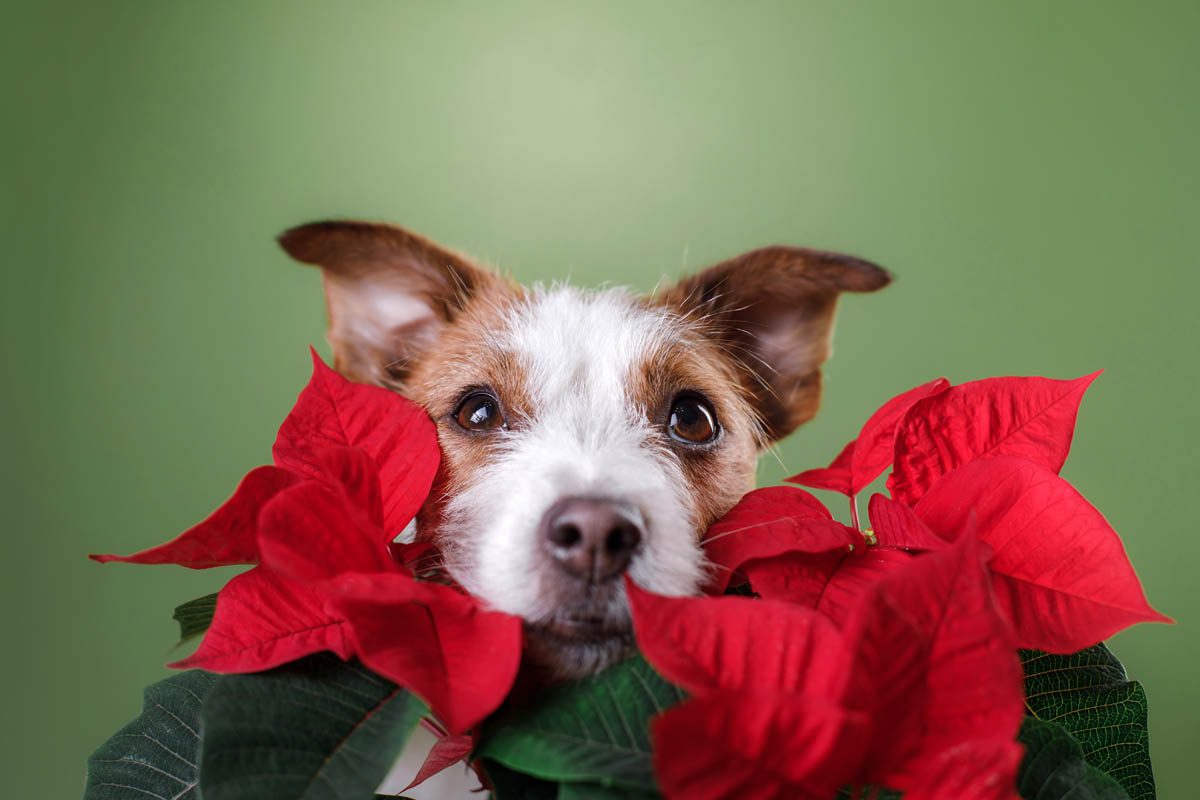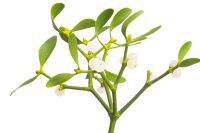Christmas plants and pets
During the Christmas period, many homes are decorated with plants. Knowing which ones are safe and which ones are potentially dangerous can save pet owners an emergency trip to the veterinarian. This list includes some of the most common Christmas plants and includes the toxic properties.
Although many of the plants are labelled non-toxic, ingestion of large amounts of any plant matter can cause gastrointestinal upset.
Related: Caring for a Christmas tree
Holly

| Family | Aquifoliaceae |
| Botanical name | Ilex spp. |
| Common names | English holly, European holly, Christmas holly, Holly, Holm, Hulst, Hulver |
| Mature height | 1.5 to 24 metres (5 to 80 feet) |
| Flower colour |
White |
| Leaf colour |
Dark green |
| Native to | Europe, North Africa and western Asia |
| Toxicity | Toxic to dogs |
| Toxic compounds | Saponin glycosides, methylxanthines, and cyanogens plus the leaves cause mechanical injury when chewed |
| Toxic parts | All parts (the highest concentration in young leaves and berries) |
| Severity | Mild to moderate |
Holly is a genus of over 400 species of evergreen and deciduous trees, shrubs, and climbers native to Europe, North Africa and Western Asia. The shiny, stiff leaves are ovate or oblong with wavy, spiked or smooth margins. White flowers are produced in late spring to early summer, followed by attractive red fruit (commonly referred to as berries) in winter.
Mistletoe
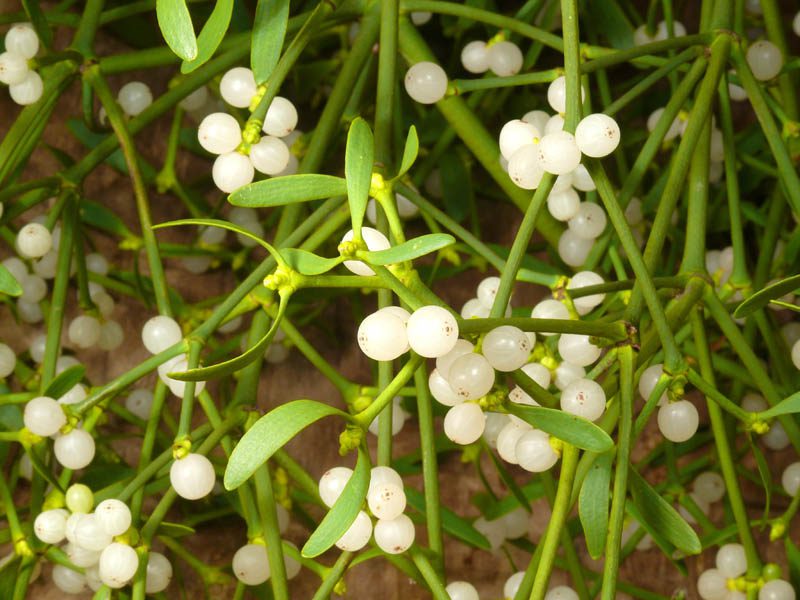
| Family | Loranthaceae, Viscaceae, or Eremolepidaceae |
| Botanical name | Phoradendron serotinum (North American) and Viscum album (European) |
| Common names | American or European Mistletoe |
| Mature height | 90 cm |
| Flower colour |
White |
| Leaf colour |
Green |
| Native to | Europe, North Africa and western Asia |
| Toxicity | Toxic to dogs |
| Toxic compounds | Phoratoxin, gamma-aminobutyric acid, phenols, phenethylamines, phenylpropanoids, polysaccharides, and flavonoids |
| Toxic parts | All parts of P. serotinum are toxic, all parts of V. album apart from the berries |
| Severity | Mild to moderate |
Mistletoe is a hemiparasitic plant that takes its nutrients from its host plant. It is most commonly associated with Christmastime and ‘kissing under the mistletoe‘.
The white berries of mistletoe are eaten by birds, the seeds of which release a sticky substance called viscin which passes out of the bird’s body via the feces and sticks to trees where they germinate in spring.
Rosemary
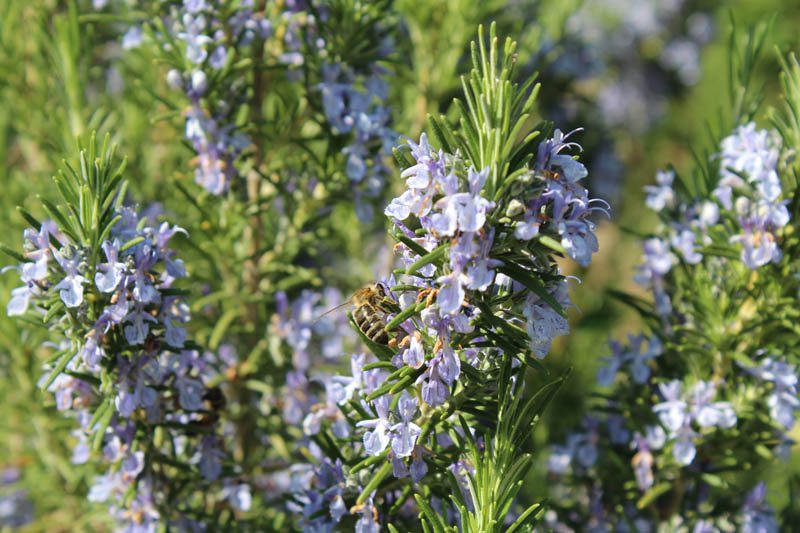
| Family | Lamiaceae |
| Botanical name | Salvia rosmarinus |
| Common names | English holly, European holly, Christmas holly, Holly, Holm, Hulst, Hulver |
| Mature height | 1.5 metres |
| Flower colour |
Purple |
| Leaf colour |
Dark green |
| Native to | Mediterranean |
| Toxicity | Non-toxic |
| Toxic compounds | – |
| Toxic parts | – |
| Severity | – |
Rosemary is a perennial, evergreen shrub grown for its fragrant needle-shaped leaves that are popular as a culinary herb. It grows clusters of pale purple flowers during spring and summer.
Rosemary is used to create wreaths and topiaries during the Christmas period.
Christmas cactus

| Family | Cactaceae |
| Botanical name | Schlumbergera bridgesii |
| Common names | Christmas cactus, Holiday cactus |
| Mature height | 15 – 30 cm |
| Flower colour |
Pink, red, orange, gold, cream, and white |
| Leaf colour |
Green |
| Native to | Southeastern Brazil |
| Toxicity | Non-toxic |
| Toxic compounds | – |
| Toxic parts | – |
| Severity | – |
Christmas cactus is a flowering succulent native to south-eastern Brazil. These winter flowering succulents commonly grown for their bright flowers that grow on the tips of pendant shoots made up of oblong and flattened segments. The blooms last approximately 7 weeks and grow in a range of colours including red, pink, orange (salmon), yellow and white.
Poinsettia

| Family | Araceae |
| Botanical name | Euphorbia pulcherrima |
| Common names | Poinsettia, Christmas flower, Winter rose, Painted leaf, Lobster plant, Crown of the Andes, Flower of Christmas Eve |
| Leaf colour | Green |
| Flower colour | Red, pink, and white |
| Toxicity | Toxic to dogs |
| Toxic properties | Diterpenoid euphorbol esters and saponins |
| Toxic parts | All parts |
| Level of toxicity | Mild |
Poinsettia is a perennial shrub native to southwestern Mexico and Guatemala. The common name is derived from the physician and botanist Joel Roberts Poinsett (March 2, 1779 – December 12, 1851). Joel was the first Minister to Mexico from 1825 to 1829 and while serving, found the poinsettia growing near Taxco and sent cuttings to South Carolina in 1828.
Spanish Franciscan priests in Mexico began using poinsettias in the Fiesta of Santa Pesebre nativity procession. Poinsettias begin to bloom in October, which signals the impending arrival of Christmas. The red poinsettia bracts represented the blood of Christ. Californian poinsettia farmer Paul Ecke Sr. sold poinsettia flowers during winter. Paul Ecke Jr. would further promote the poinsettia by providing live plants as displays for talk shows and women’s magazine displays at Christmastime.
Ivy
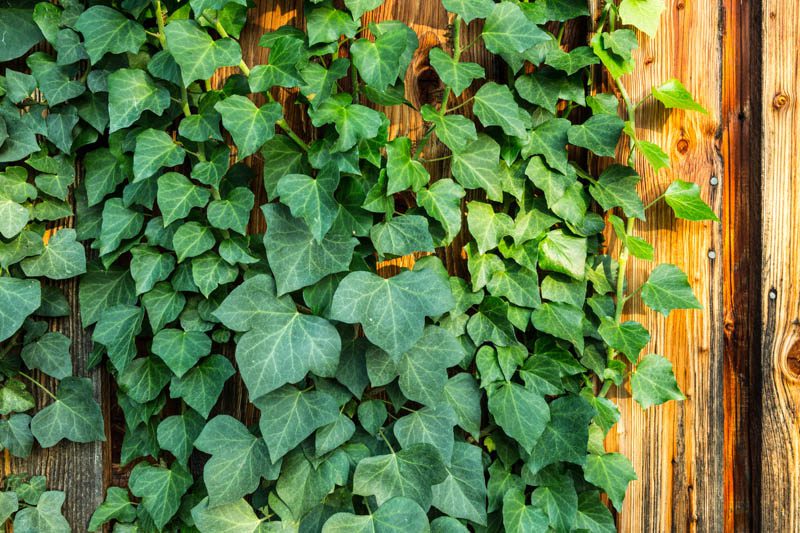
| Family | Araliaceae |
| Botanical name | Hedera spp. |
| Common names | Ivy, English ivy, Branching ivy, Glacier ivy, Needlepoint ivy, Sweetheart ivy, California ivy |
| Leaf colour | Green |
| Flower colour | Yellow/green |
| Toxicity | Toxic to dogs |
| Toxic properties | Triterpenoid saponin and polyacetylene compounds |
| Toxic parts | All parts |
| Level of toxicity | Mild |
A genus of 12 to 15 evergreen vines native to Eurasia and North Africa. Ivy is a popular indoor ornamental plant as well as a climbing vine that covers walls and buildings when grown outside.
The most common species of ivy is English ivy (Hedera helix), which is found throughout the world.
Hippeastrum
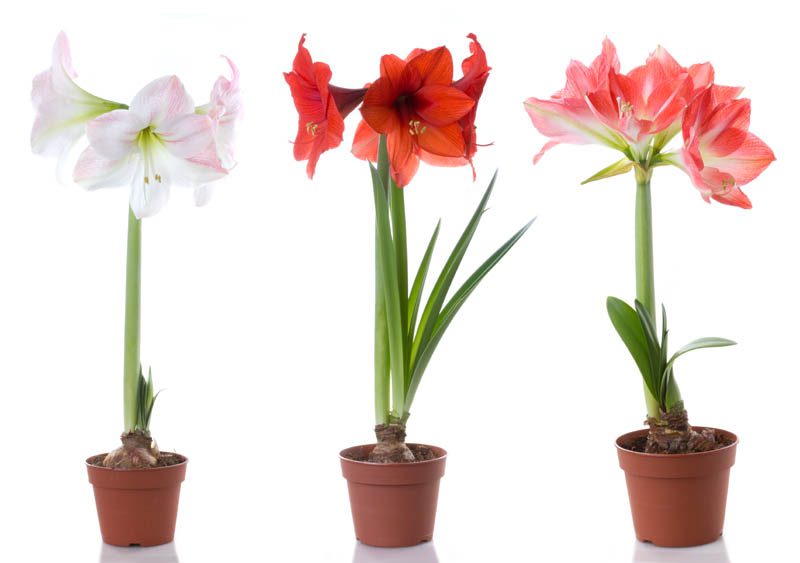
| Family | Araceae |
| Botanical name | Euphorbia pulcherrima |
| Common names | Poinsettia, Christmas flower, Winter rose, Painted leaf, Lobster plant, Crown of the Andes, Flower of Christmas Eve |
| Leaf colour | Green |
| Flower colour | Red, pink, and white |
| Toxicity | Toxic to dogs |
| Toxic properties | Diterpenoid euphorbol esters and saponins |
| Toxic parts | All parts |
| Level of toxicity | Mild |
A flowering bulb native to Central and South America, the Hippeastrum is popular for its large, trumpet-shaped flowers. Hippeastrum is a popular indoor bulb that flowers for 3 to 4 weeks during the Christmas period.
Amaryllis is often used when describing Hippeastrum, but they are different plants. Hippeastrum is a genus made up of 90 species and 600 hybrids and cultivars of flowering bulbs native to the Caribbean, Mexico and South America. This showy plant is commonly sold as an indoor flowering plant during the Christmas period. Amaryllis is a flowering bulb native to South Africa made up of two species, A. belladonna and A. paradisicola. Flowers on a single leafless stem in autumn, hence the name ‘naked lady‘. At the top of each stem is a cluster of six or more trumpet-shaped flowers most commonly in pink. A month or so later, the strappy foliage appears, lasting through winter before dying back.
Christmas rose (hellebore)

| Family | Ranunculaceae |
| Botanical name | Hellebore spp. |
| Common names | Hellebore, Christmas rose, Lenten rose |
| Leaf colour | Green |
| Flower colour | Red, pink, white, purple, yellow |
| Toxicity | Toxic to dogs |
| Toxic properties | Bufadienolides, glycosides, veratrin and prtoanemonin |
| Toxic parts | All parts |
| Level of toxicity | Moderate |
Hellebore is a flowering evergreen perennial native to southern Europe. It is a popular plant for ornamental gardens because it flowers during winter. The dense foliage forms clumps and the large, open flowers bloom from early winter until spring, providing colour.
Balsam fir
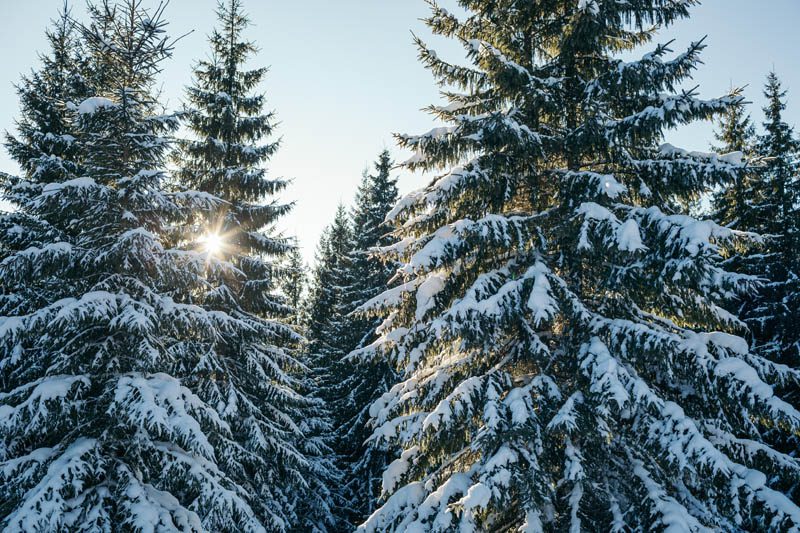
| Family | Pinaceae – Pine |
| Botanical name | Abies balsamea |
| Common names | Balsam fir, Blister Pine, Balm of Gilead fir |
| Leaf colour | Green |
| Flower colour | – |
| Toxicity | Non-toxic |
| Toxic properties | – |
| Toxic parts | – |
| Level of toxicity | – |
First described in 1768 by English botanist and gardener Philip Miller, balsam fir is an aromatic tree native to Northeastern America and eastern Canada, popular for its highly scented blue/green foliage. Balsam fir grows at a rate of 30 cm (12 inches) per year.
Fraser fir
| Family | Pinaceae – Pine |
| Botanical name | Abies fraseri |
| Common names | Hickory pine, White spruce, Green spruce, Silver spruce, Colorado spruce |
| Leaf colour | Green |
| Flower colour | – |
| Toxicity | Non-toxic |
| Toxic properties | – |
| Toxic parts | – |
| Level of toxicity | – |
Fraser fir is a popular choice for a Christmas tree due to its pyramid shape, fresh fragrance and soft needles. Named after Scottish botanist John Fraser, the Fraser fir is native to the Appalachian mountains of the eastern United States and is a close relative to balsam fir.
Douglas fir
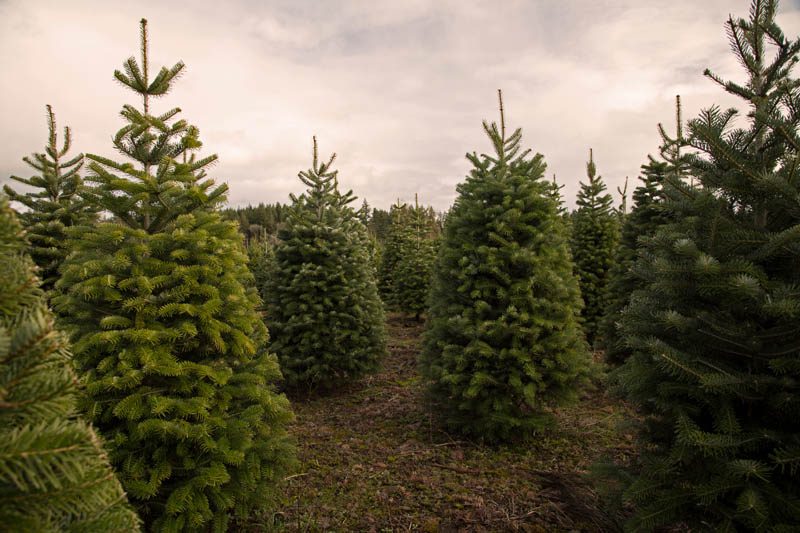
| Family | Pinaceae – Pine |
| Botanical name | Pseudotsuga menziesii |
| Common names | Douglas fir, Oregon fir, Oregon pine, Oregon, Green Douglas fir, Blue Douglas fir, Red pine, Columbian pine, Common Douglas, Coast Douglas-fir |
| Leaf colour | Green |
| Flower colour | – |
| Toxicity | Non-toxic |
| Toxic properties | – |
| Toxic parts | – |
| Level of toxicity | – |
Douglas fir is a medium to fast-growing evergreen conifer native to the western region of North America. The delicate citrus scent, thick, soft needles, pyramidal shape and strong branches make it an ideal Christmas tree.
Norway spruce
| Family | Pinaceae – Pine |
| Botanical name | Picea abies |
| Common names | Common spruce, European spruce, Christmas tree |
| Leaf colour | Green |
| Flower colour | – |
| Toxicity | Non-toxic |
| Toxic properties | – |
| Toxic parts | – |
| Level of toxicity | – |
The fastest-growing of all the Christmas trees, Norway spruce (Picea abies) is a large, coniferous tree native to Eurasia. Norway spruce is loved for its beautiful pine scent, layered branches and shapely form and is widely cultivated in North America to cater to the Christmas tree market. The wood is also used in the paper, construction and lumber industries.
White spruce

| Family | Pinaceae – Pine |
| Botanical name | Picea glauca, Picea alba |
| Common names | White spruce, Black hills spruce, Canadian spruce |
| Leaf colour | Green |
| Flower colour | – |
| Toxicity | Non-toxic |
| Toxic properties | – |
| Toxic parts | – |
| Level of toxicity | – |
White spruce (Picea glauca) is a coniferous evergreen native to the United States and Canada. The compact conical shape and short blue-green needles make white spruce a popular choice. The waxy needles have a waxy white coating (hence the name glauca, which means shimmering), and are quite sharp. As a plus, this is likely to deter dogs from chewing the tree.
Blue spruce
| Family | Pinaceae – Pine |
| Botanical name | Picea pungens |
| Common names | Hickory pine, White spruce, Green spruce, Silver spruce, Colorado spruce |
| Leaf colour | Green |
| Flower colour | – |
| Toxicity | Non-toxic |
| Toxic properties | – |
| Toxic parts | – |
| Level of toxicity | – |
Blue spruce (Picea pungens) is a slow-growing, compact evergreen conifer native to North America. The shape of blue spruce is pyramidal, with short, somewhat prickly, stunning silvery-blue needles making it one of the most popular Christmas trees.
Julia is a writer and landscape consultant from Wollongong with a love of horticulture. She had been an avid gardener for over 30 years, collects rare variegated plants and is a home orchardist. Julia is passionate about learning and sharing her knowledge of plant propagation and plant toxicology. Whether it’s giving advice on landscape projects or sharing tips on growing, Julia enjoys helping people make their gardens flourish.
